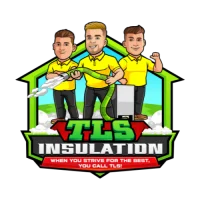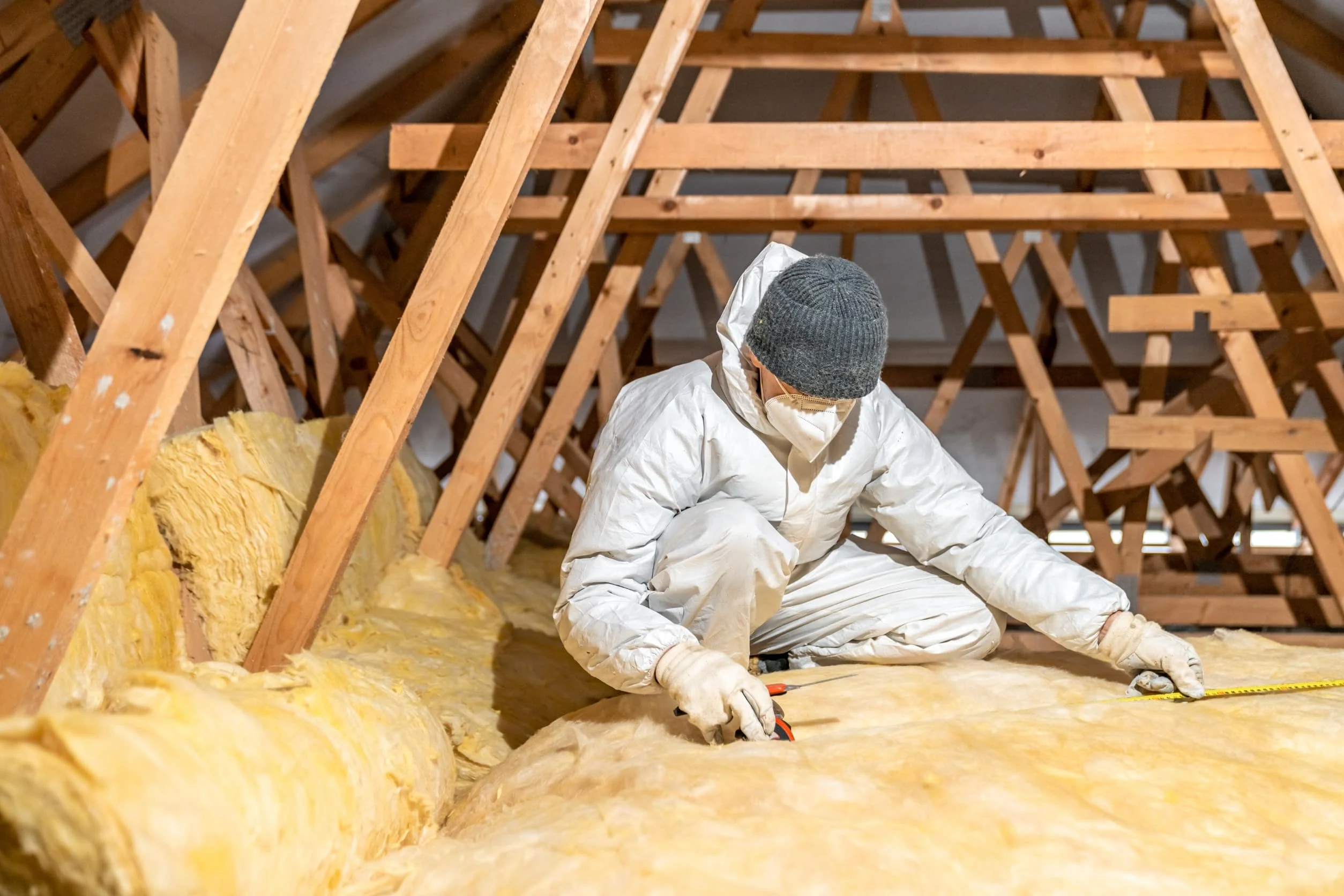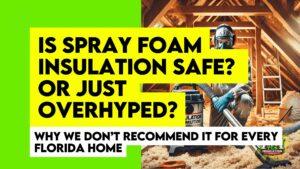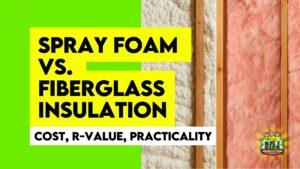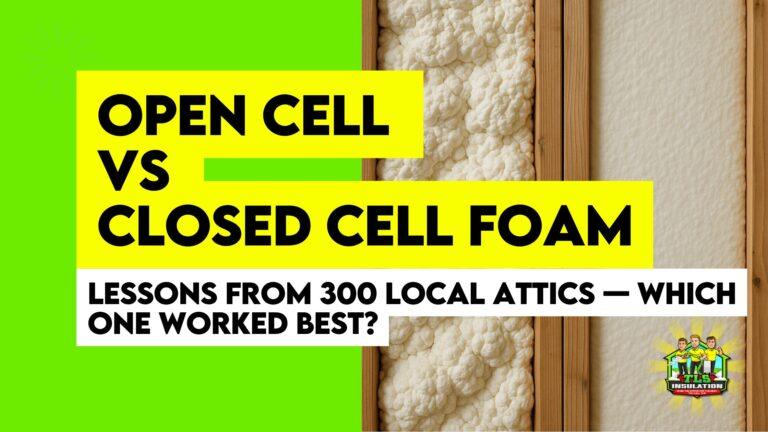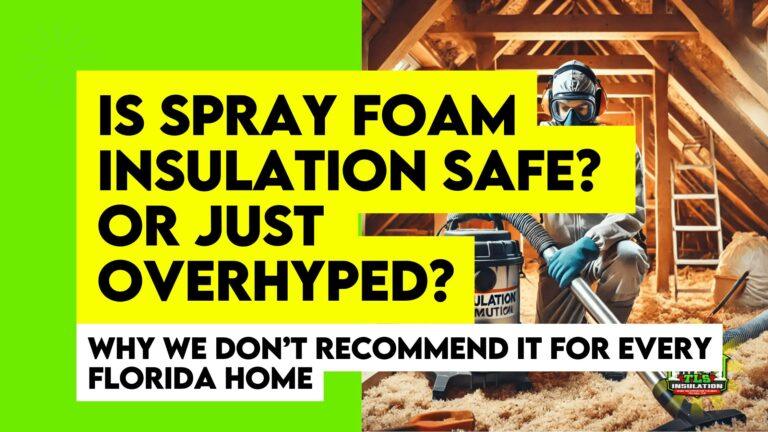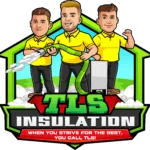When it comes time for you to insulate your home, one of the most important questions you might be asking yourself is whether or not it’s necessary to remove old insulation before adding more.
The decision can be a difficult one since various types and techniques need to be taken into consideration. Fortunately, we’re here to give you all the information you need to decide what’s right for your property – so read on and discover the answers about removing old insulation before adding new!
What is Insulation and its Benefits
Insulation refers to the material used to slow down the transfer of heat, sound, or electricity. Typically used in buildings and manufactured products, insulation helps maintain an optimal temperature by reducing the amount of heat that escapes during winter and enters during summer.
The benefits of insulation are manifold. It enhances the energy efficiency of your home, thus leading to reduced energy costs. By regulating the temperature, it ensures a comfortable living environment all year round.
Moreover, it also provides a sound barrier, curbing the amount of noise that enters your home. Insulation also contributes to the reduction of greenhouse gas emissions, thereby playing a crucial role in environmental conservation.
Reasons for Replacing Old Insulation
1. Degradation and Wear and Tear: Over time, insulation can become compacted, reducing its effectiveness. The material can also degrade, especially if it’s been exposed to moisture or doesn’t have enough inches of insulation, leading to a decline in R-value (the measure of thermal resistance).
2. Infestation: Old insulation can become a breeding ground for pests like rodents and insects. If an infestation occurs, it’s best to remove and replace the insulation to prevent further damage and potential health risks.
3. Moisture and Water Damage: If your insulation has been exposed to water due to leaks or floods, it can harbor mold and mildew, posing serious health risks. For example, the fiberglass blown in insulation can settle down when come across water, losing its ability to regulate temperature effectively. So, removing blow-in insulation is only the option and replacing it with new insulation.
4. Outdated Material: Older homes might still have asbestos or vermiculite insulation, which poses significant health risks. These materials should be replaced with safer, modern alternatives.
5. Energy Efficiency: Newer insulation materials offer better thermal resistance than their older counterparts, which can lead to significant energy savings.
6. Fire Damage: Insulation that has been exposed to fire should be replaced immediately, as it may contain toxic substances and won’t perform as effectively.
Remember, it may add some additional cost to insulate attic and other areas, however, the process of removing old insulation should always be handled by professionals due to potential exposure to hazardous materials and to ensure that the new insulation is installed correctly.
The Risks of Not Removing Old Insulation
Failing to remove old insulation can have far-reaching consequences. First and foremost, by not removing old, degraded, or infested insulation, you risk the overall efficiency of your home’s temperature regulation. It could lead to higher energy bills as your heating or cooling system works overtime to compensate.
Secondly, the health risks associated with old insulation should not be overlooked. Insulation contaminated with mold, mildew, or pests can deteriorate the indoor air quality of your home, leading to potential health issues like allergies, respiratory problems, and in severe cases, toxic mold exposure.
Lastly, retaining outdated insulation materials can lead to a higher risk of fire damage. Some older materials are more flammable than their modern counterparts. Moreover, if Insulation materials contain asbestos, continuous exposure can lead to serious health conditions such as lung cancer or mesothelioma.
In summary, not removing old insulation can impede your home’s efficiency, compromise health and safety, and result in higher long-term costs. Always consult with a professional when considering whether to replace old insulation.
How to Remove Old Insulation Properly
Removing old insulation is a delicate task that can pose health risks if not done correctly. It’s always recommended to hire a professional for replacing old attic insulation and cleanup services, but if you decide to do it yourself, follow these steps:
1. Protective Gear: Always wear protective gear, including safety goggles, disposable coveralls, gloves, and a respirator mask to protect against dust and harmful fibers.
2. Preparation: Start by sealing off the area to prevent dust and particles from spreading to other parts of the house. Cover floor surfaces with plastic sheeting for easier cleanup.
3. Removing the Insulation: Starting from one corner of the room, carefully remove the insulation. If it’s batt insulation, it can be rolled up and disposed of. Blown-in insulation can be sucked out using an insulation removal vacuum.
4. Disposal: Insulation should be placed into thick contractor bags and sealed tightly. Check with your local waste facility to ensure proper disposal methods.
5. Cleaning: After all the insulation is removed, thoroughly clean the area with a HEPA vacuum to remove any remaining particles.
6. Inspection: Inspect the area for any signs of mold, mildew, or pest infestation and treat accordingly.
Remember to follow all safety guidelines and local regulations when removing old insulation. If you are unsure about the process the best way to go about it is to call a professional insulation company.
Safest Ways to Add New Insulation
Adding new insulation to your home can be a DIY project, but it’s important to take necessary safety measures and consider professional help when necessary. Here are the safest ways to add new insulation to your home:
1. Choose the Right Insulation: Insulation comes in various forms like batts, rolls, loose-fill, rigid foam panels, and sprayed foam. Each type has its application and effectiveness. Research your options thoroughly or consult with a professional to choose the material that best fits your needs.
2. Wear Safety Equipment: Always wear the appropriate safety gear when handling insulation. It includes gloves, goggles, a dust mask, and long-sleeved clothing to prevent skin irritation from insulation fibers.
3. Proper Ventilation: Ensure the area is well-ventilated during installation. It helps to protect you from inhaling harmful particles that can be present in insulation.
4. Installation Technique: The installation technique depends on the type of insulation. For batt or roll insulation, start from the top and work your way down, ensuring the material fits snugly in the frames. For loose-fill insulation, first hand advice is to consult an expert loose-fill insulation contractor to make the process stress-free and smooth. Otherwise, use a blower and evenly distribute the material across the area. Spray foam insulation should be applied in layers to avoid trapping heat, which could lead to a fire hazard.
5. Avoid Blocking Vents: When installing insulation in attic, make sure not to block areas that need ventilation, such as eave vents in attics. Blocking these could lead to moisture problems or fire hazards.
6. Following Building Codes: Always follow local building codes and regulations when installing insulation. These codes specify the correct R-value and installation methods for different areas of the home.
7. Professional Installation: If you’re uncertain or uncomfortable installing insulation yourself, hiring a professional is the safest option. They have the knowledge, experience, and equipment to install insulation safely and correctly.
Remember, while adding insulation is an effective way to improve your home’s energy efficiency, it’s important to prioritize safety throughout the installation process.
Summing Up!
Insulation is an essential aspect of home ownership and it should be taken seriously. There are many benefits to installing insulation in your house that cannot be ignored. If you fear that your old insulation may be too outdated or ineffective, it’s best to do the responsible thing and replace it with newer, higher-grade materials.
Doing this will help ensure the safety of everyone in the home by reducing health risks. It can also save you money in the long run by lowering energy costs throughout the year. To ensure the job is done correctly, hire a professional if you feel comfortable doing so, or choose one of the safest methods available to install new insulation yourself.
Whichever option you choose, just remember that taking a proper approach to insulation will have its rewards in the end. So give yourself and your family peace of mind by investing in updated insulation today – your future self will thank you for it!
About Us
Are you looking to install or upgrade your home’s insulation in Tampa Bay, Sarasota, and surrounding areas? TLS Insulation Installers is where to call! A family-owned and operated business serving the residents of South-West Florida for the last 20 years, we are consistently recognized for providing the highest-quality insulation services in the region.
We set high standards for our work, ensure personalized attention to every project, and fulfill our customers’ needs down to the smallest detail. At TLS Insulation, we understand how important energy efficiency and sustainability are for modern homeowners, and strive to help them achieve them through world-class insulation.
Contact us today to get accurate cost estimates for your project and learn more about us.

